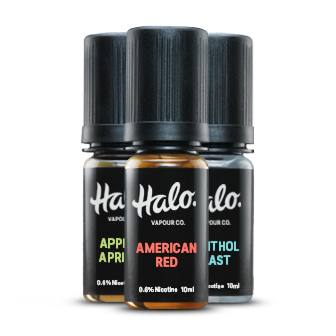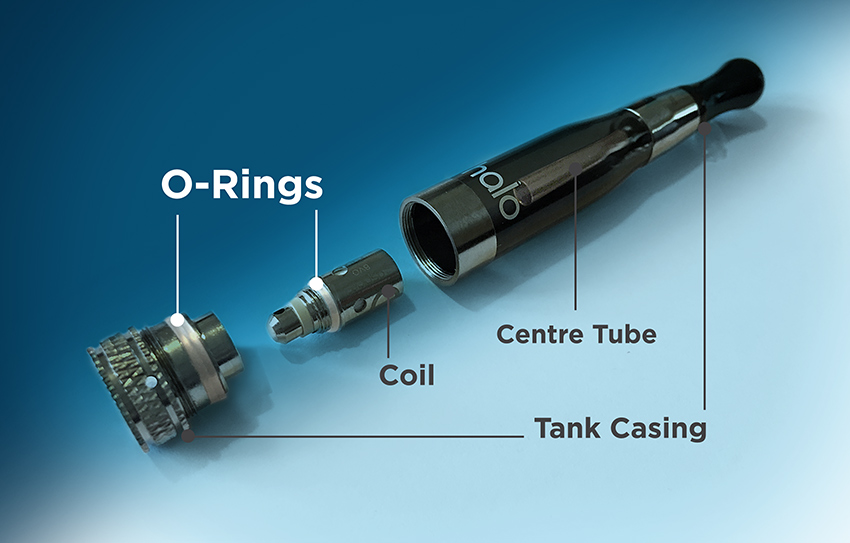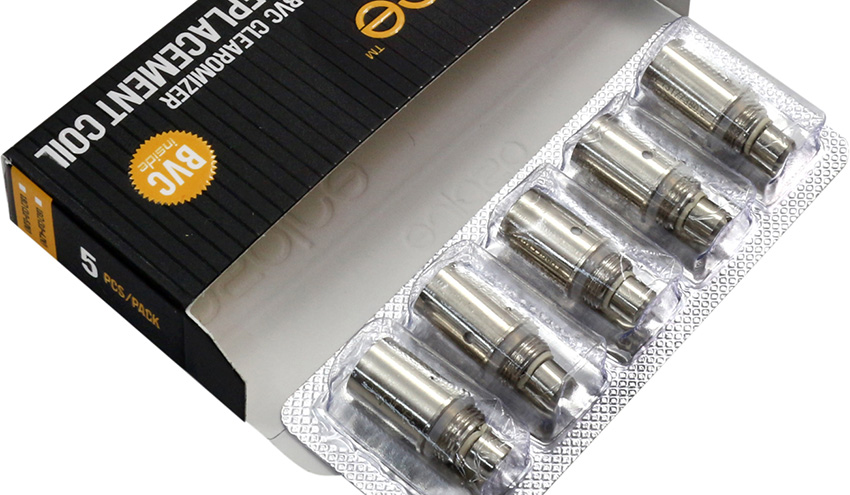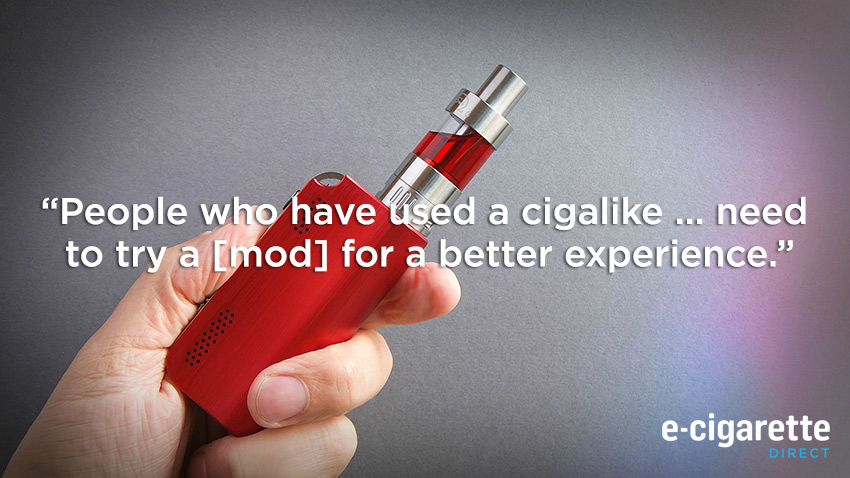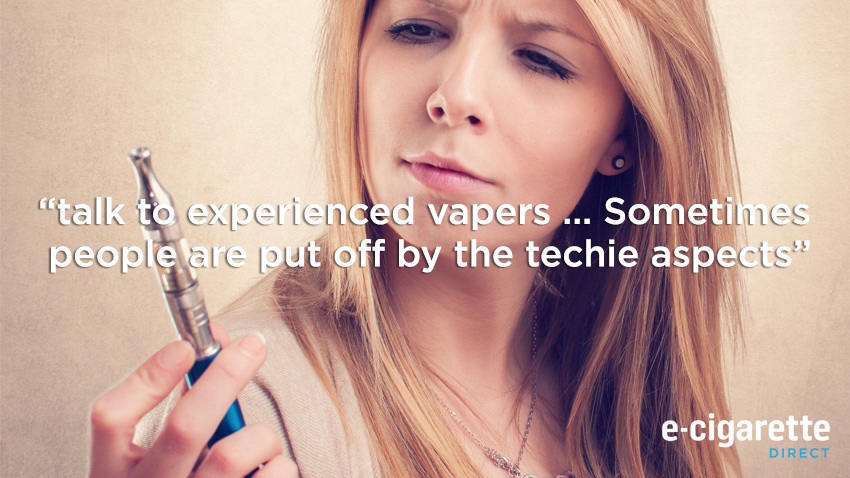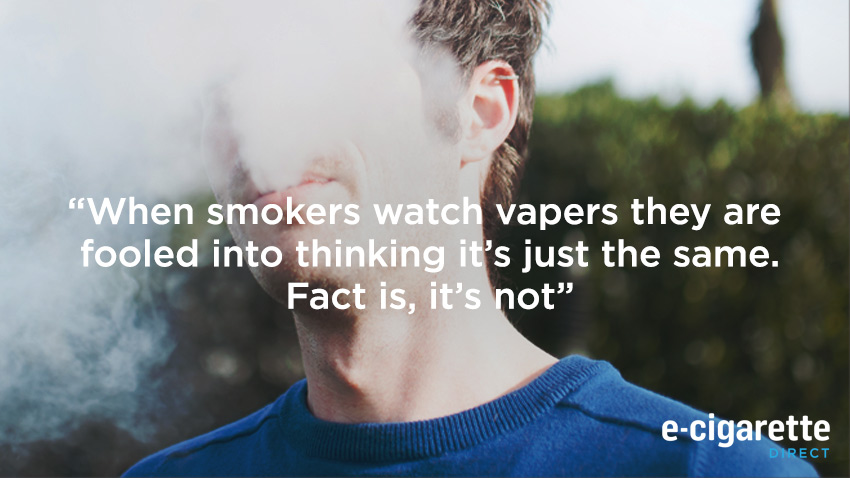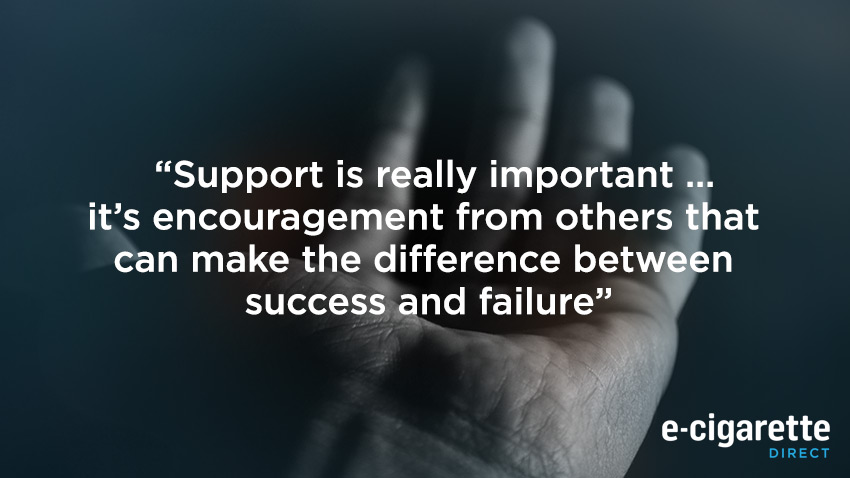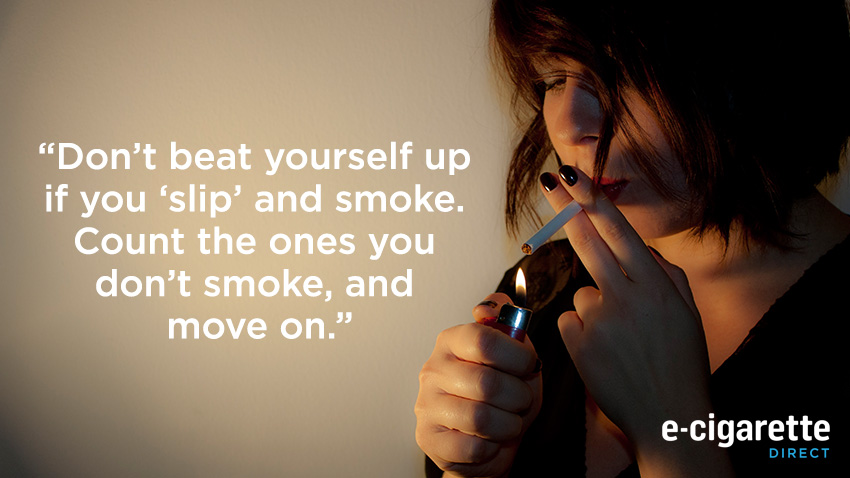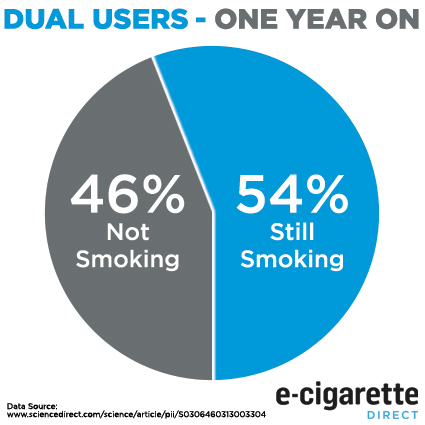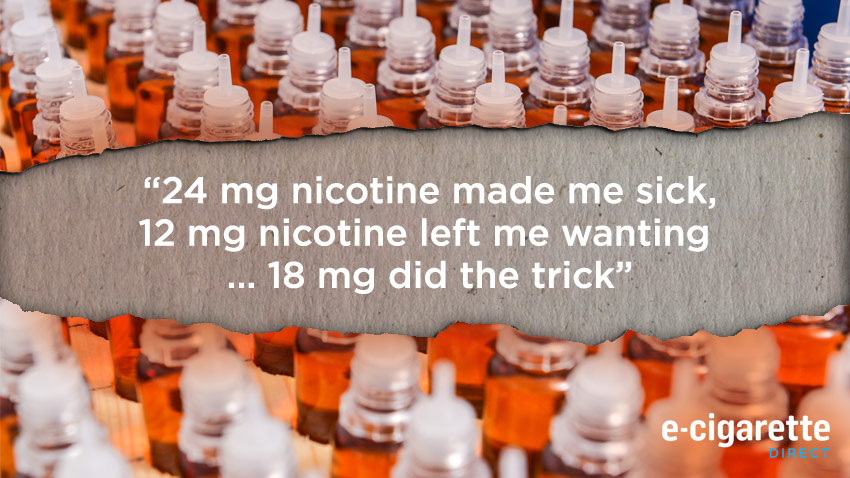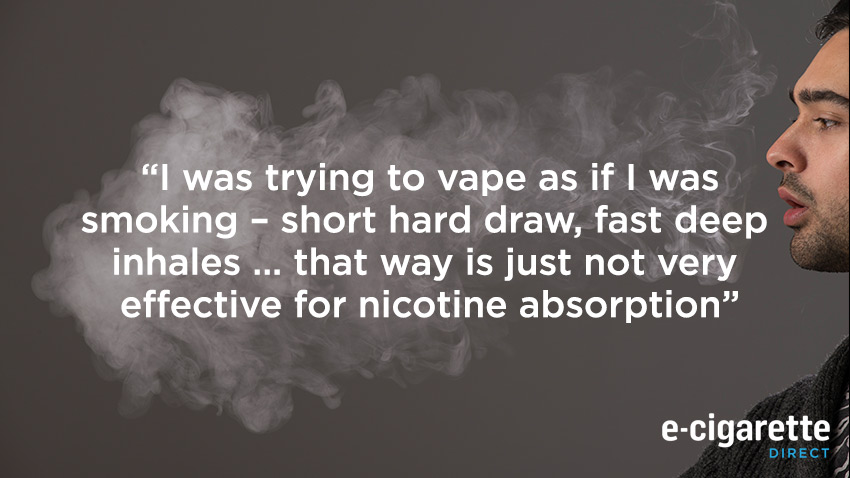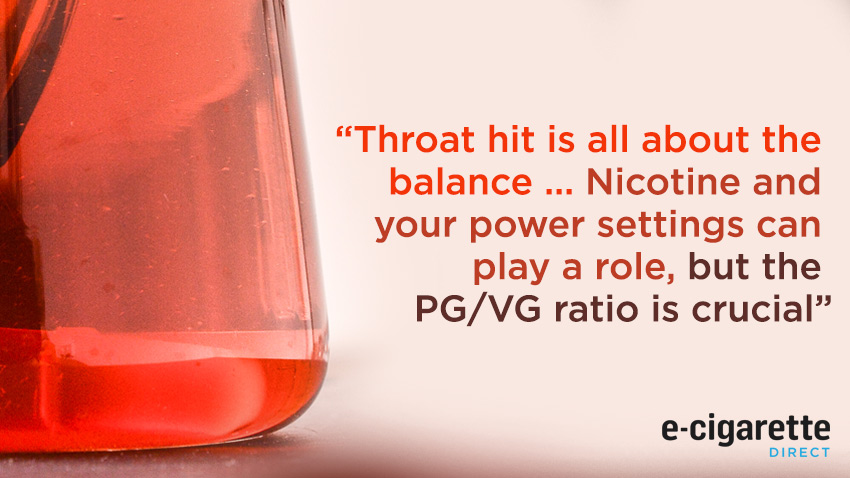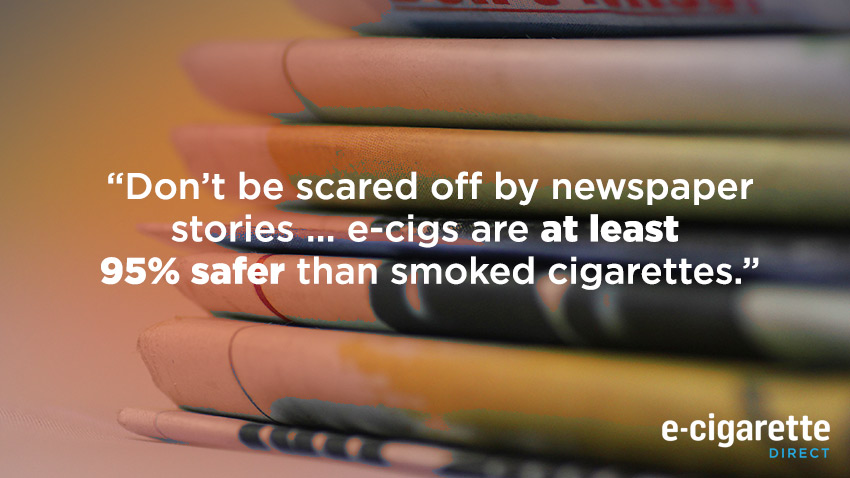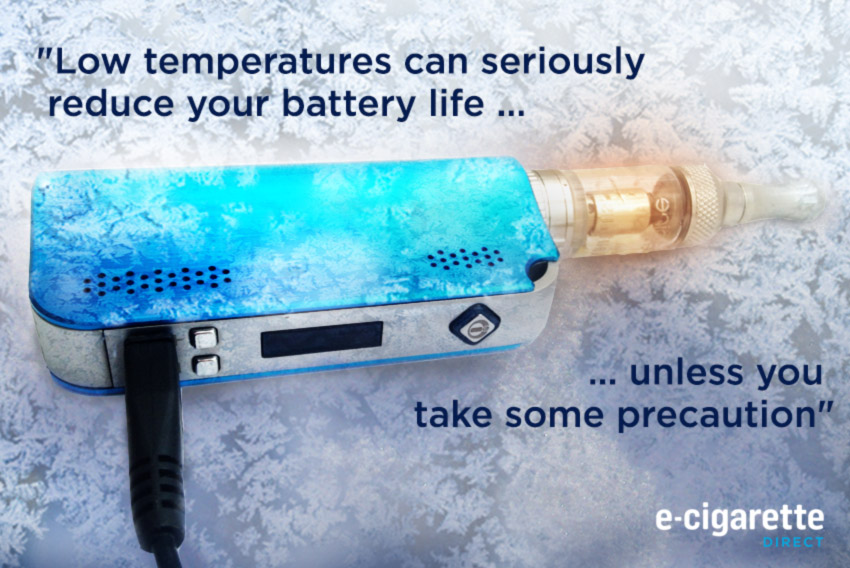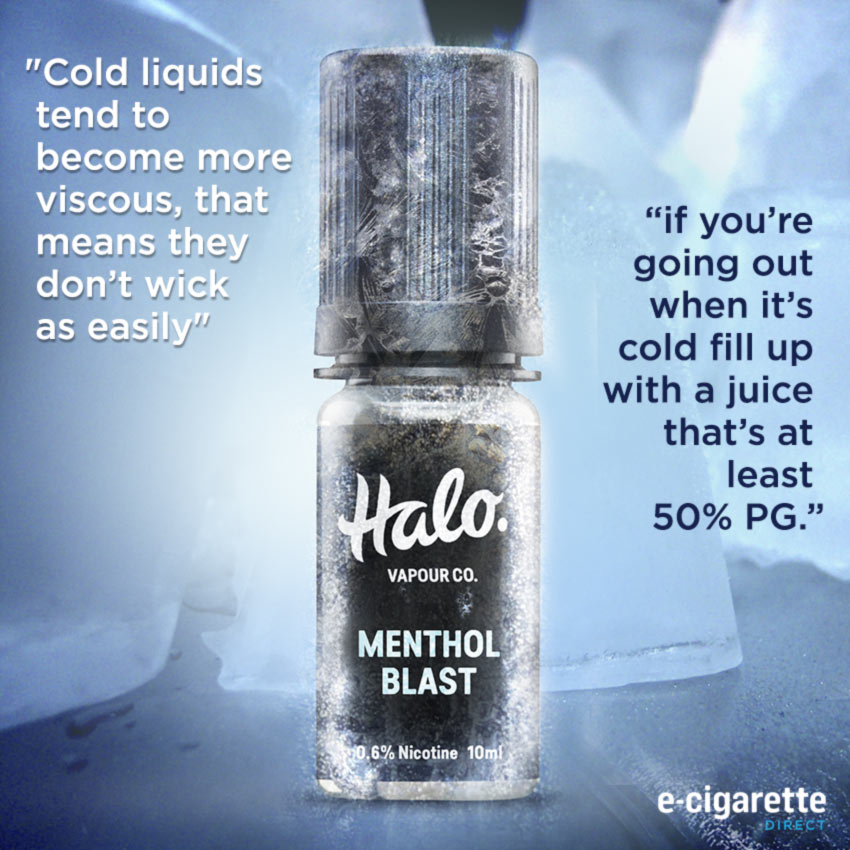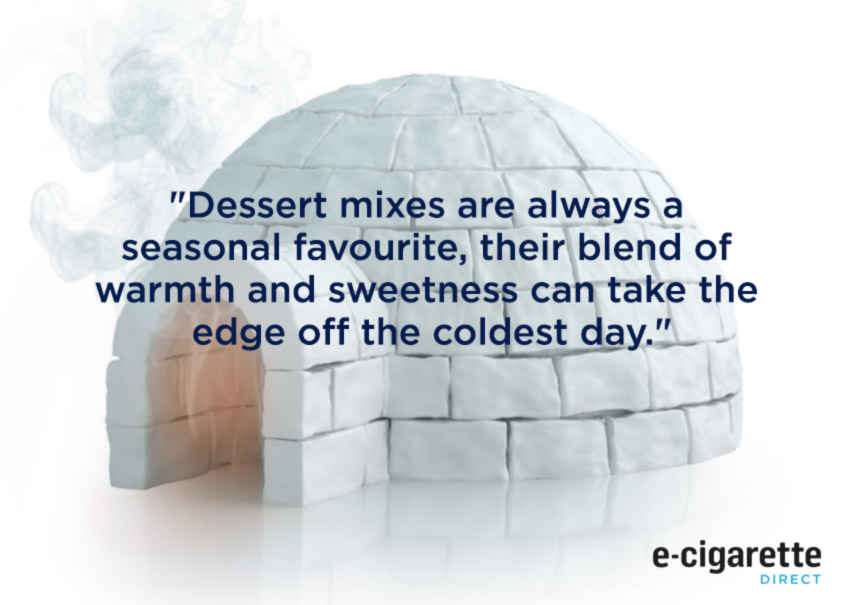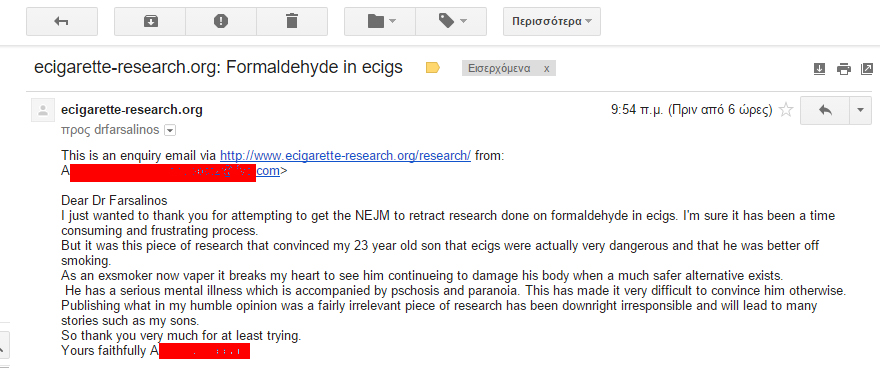Dr.
Konstantinos Farsalinos does a huge amount for the vaping community.
He’s a prolific researcher and he spends a lot of time refuting
anti-vaping junk science.
In response to his efforts to get a study retracted, he received the following email from a consumer:
This heartbreaking story cuts to the core of a big problem…
the use of flawed studies to convince people vaping is dangerous.
And similar stories are unfolding around the world.
- “The current best estimate is that e-cigarettes are around 95% less harmful than smoking.”
- “Nearly half the population (44.8%) don’t realise e-cigarettes are much less harmful than smoking.”
So what’s going on?
There are concerns about the potential risks of e-cigarettes.
But most of the time, the things we hear about potential risks of vaping depend on the “cherry-picking” of poor-quality studies.
The problem is that this works.
When confronted with the findings of a
scientific study, clicking the link and trying to check the evidence for
yourself is a lot of work. It’s easier to just take the results at face
value, but they often aren’t justified.
So, which severely flawed studies are most often cherry-picked by the opponents of vaping?
Which pieces of research should those against vaping simply stop citing?
Here are 18 of the worst offenders.
1 – Hidden formaldehyde in e-cigarette aerosols Read the study
This study looked for
formaldehyde-releasing agents (called formaldehyde hemiacetyls) in
e-cigarettes vapour. The devices were tested at both a low and a high
voltage.
What it Found
At low voltage, formaldehyde hemiacetyls
were not detected, but at high voltages they were. Based on the high
voltage results, the authors calculated that the risk of cancer from
vaping could be 5 to 15 times higher than from cigarettes.
This study
led to headlines such as “E-cigarettes can churn out high levels of formaldehyde.”
What’s Wrong With it?
The core problem with this study is that
the combination of voltage setting and atomizer used would invariably
lead to “dry puffs.” These taste extremely unpleasant and don’t
represent real-world use of e-cigarettes. This point has been
confirmed by later research.
At the usable setting, the chemicals were not even detected.
It’s like turning a toaster up to the
maximum setting, measuring the carcinogens on the surface of the charred
bread that pops out and then concluding that eating toast is a
significant risk for cancer. The big problem is that nobody eats
cremated toast.
Analysis of the Study
2 – Association of electronic cigarette use with initiation of combustible tobacco product smoking in early adolescence
This study investigated whether trying
e-cigarettes is linked to starting to smoke. Researchers used a group of
over 2,500 never-smoking 14-year olds to find out.
What it Found
Students who’d tried vaping were more
likely to have smoked six or twelve months later, in comparison to those
who’d never vaped.
What’s Wrong With It?
Regular vaping and smoking were not assessed: the term “use” means “tried at least once.”
So the research doesn’t show that teens
become addicted to nicotine through vaping and then progress to regular
smoking. It just shows that teens who experiment with nicotine in one
form are more likely to try it in another form, too.
The authors even note that the study can’t determine that e-cigarettes caused the smoking.
Although they tried to control for them,
there are inherent differences between non-smokers who try vaping and
ones who don’t. These “confounding” variables are likely to be
responsible for the results.
Analysis of the Study
3 – Endothelial disruptive pro-inflammatory effects of nicotine and e-cigarette vapor exposures
This study exposed mouse and human lung cells to e-cig vapour and cigarette smoke, both with and without nicotine
What it Found
The study found that e-cig vapour affects
the cells that line the lungs and causes inflammation. The results were
reported as “E-cigarette vapour – even when nicotine-free – found to
damage lung cells.”
What’s Wrong With It?
Dr. Konstatinos Farsalinos points out that
the amount of nicotine used in the study was far higher than that found
in the blood of smokers.
The lowest concentration was over 500
times higher than that found in smokers’ blood. This means directly
applying the result to real-world vapers is completely inappropriate.
Dr. Farsalinos calls the publicity about the results “politics and not
science.”
Analysis of the Study
4 – Exposure to electronic cigarettes impairs pulmonary anti-bacterial and anti-viral defenses in a mouse model
This study involved exposing mice to
e-cigarette vapour for two weeks. Researchers looked at the “free
radical” damage to the lungs and their ability to clear infections.
What it Found
The mice exposed to e-cig vapour took
longer to get better from pneumonia or the flu than the mice only
exposed to air. Some of them even died. This was used to claim that
e-cigarettes lead to an increased risk of viral infections.
What’s Wrong With It?
A lot.
Firstly, mice are not humans [citation
needed]. You can’t just take a result from mice and treat it as though
it translates to humans perfectly.
Secondly, the effects of vaping weren’t compared with smoking. At worst this would show that vaping isn’t completely safe.
Thirdly, nicotine is already well-known to suppress the immune system in mice and rats.
And finally, mice are more sensitive to
nicotine than humans. The immune system problems and death in the mice
exposed to vapour were probably due to stress and nicotine poisoning.
Analysis of the Study
5 – Use of electronic cigarettes among state tobacco cessation quitline callers
This study looked at past vaping among
people phoning a quit-smoking helpline. They aimed to work out whether
vaping affects smokers’ ability to successfully quit smoking.
What it Found
Smokers who’d used e-cigarettes before
were less likely to have quit smoking by the end of the study than those
who’d never vaped. This study has been used to argue that e-cigs
actually reduce your chance of quitting smoking.
What’s Wrong With it?
The biggest problem is the way the sample
was selected. If you try vaping but then phone a quit-smoking helpline,
it means that you were already unable to quit smoking by vaping.
By focusing only on these smokers, the
result was pretty much guaranteed. These people are likely the smokers
who struggle the most to quit, and the ones who e-cigs just might not
work for.
Also, 28 percent of the “e-cig group”
didn’t even vape for the studied quit attempt. The group was only
defined based on what they’d done in the past.
Analysis of the study
6 – Use of electronic cigarettes impairs indoor air quality and increases FeNO levels of e-cigarette consumers
This study looked for the presence of
various types of chemicals in the air after vaping. They tested three
e-liquids using volunteer vapers in a cafe-sized room.
What it Found
The results showed PG, VG and nicotine
best vape online store released from vaping, as you would expect. They also found a 20
percent increase in polycyclic aromatic hydrocarbons and over twice as
much aluminium in the air after vaping.
The authors concluded “[e-cigs’] pollutants could be of health concern for users and secondhand smokers.”
What’s Wrong With it?
“Clean” air isn’t so clean. That’s why
taking background readings is important. Otherwise you might mistake
normal components of air for something being emitted.
The authors took a background reading, but did so on a different day to the testing.
This is a big problem – as noted by Dr.
Farsalinos in a letter to the editor about the study – because the
levels of chemicals can vary from day-to-day.
This led to many strange results. For
example, they found lower quantities of most metals during vaping, even
though we know e-cigs give off small amounts of metal.
Also, no other second-hand vaping study has found PAHs. The baseline reading issue could explain this anomalous result.
Analysis of the Study
7 – Electronic cigarettes and conventional cigarette use among US adolescents: A cross-sectional study
This study looked at the associations
between vaping and smoking in American teens. Researchers used data from
the 2011 and 2012 National Youth Tobacco Surveys.
What it Found
The results just show that vapers are more
likely to be smokers and smokers who’d vaped were less likely to have
quit in the last year.
The study was widely used as evidence of a gateway effect, and the authors concluded:
“Use of e-cigarettes does not discourage, and may encourage, conventional cigarette use among US adolescents.”
Their press release
went even further: “E-cigarettes: Gateway to nicotine addiction for U.S. teens, says UCSF study.”
What’s Wrong With it?
The study tells us one thing: the people
who vape are more likely to be smokers. That’s it. To confidently
conclude that the vaping caused the smoking is pretty much absurd.
Carl V. Phillips drives home how critical
this problems with the study are. He points out that all the findings
would also be consistent with the perfect scenario: that every single
vaper is using e-cigs to quit smoking.
If they’d asked which came first, it could have given a little bit of a sign of what was actually going on. But they didn’t.
Analysis of the Study
8 – Particulate matter from electronic cigarettes and conventional cigarettes: a systematic review and observational study
This study looked at the existing evidence
on second-hand vaping. Researchers also measured the amount of fine
particles in the homes of a vaper, a smoker and two non-smokers
What it Found
There were much lower levels of
particulate matter in the vaper’s home than in the smoker’s home.
However, it was slightly higher than in the non-smokers’ homes.
Based on this, they concluded that e-cigs emit toxicants, including fine particles.
What’s Wrong With it?
The results themselves show the big
problem with using this study to claim e-cigarettes aren’t safe for
bystanders. The vaper’s home was almost indistinguishable from the
non-smokers’ homes.
The difference per cubic metre between the
non-smokers’ and the vaper’s home was less than one millionth of a
gram. In the smoker’s home, levels were 60 times higher.
Analysis of the study
9 – Center for Environmental Health – A smoking gun: Cancer-causing chemicals in e-cigarettes
The report involved tests of 47 cigalike
e-cigarettes and 50 refillable models. Researchers were looking for
acetaldehyde and formaldehyde.
What it Found
They found that 50 products exceeded
California’s Prop 65 limits for these chemicals. They also reported the
most extreme values they found: 473 times over the limit for
formaldehyde and 254 times over it for acetaldehyde.
This led to
headlines such as “Lawsuit charges e-cigarettes contain cancer-causing chemicals
What’s Wrong With it?
There is no information about what they
actually did. The report only says it was tested under “realistic”
conditions. It doesn’t even give hard numbers for how much formaldehyde
and acetaldehyde they found.
The authors even mention the danger in
these tests (like in the first study in this article). Yet they still
don’t think we need more information to work out if they made the same
crucial mistake.
“We tested some e-cigarettes in a way
we’re not telling you and they’re bad for you” is the short version.
That’s why citing this ‘study’ is a complete waste of time.
Analysis of the Study
10 – Metal and silicate particles including nanoparticles are present in electronic cigarette cartomizer fluid and aerosol
This study simply involved looking for metals and silicate particles in e-cig vapor.
What it Found
It found a range of metals in vapour,
pointing out that 9 of 11 were in higher quantities than in cigarette
smoke. They also added this statement:
Many of the elements identified in EC aerosol are known to cause respiratory distress and disease.
They also included a detailed list of the
health problems these metals have been linked to. It’s ideal ammunition
for those looking to bad-mouth e-cigs.
What’s Wrong With it?
The list of health problems linked to the
metals implies that the e-cigarette vapour had risky levels of these
chemicals present.
It didn’t.
In fact, the levels were so small that
they’re extremely unlikely to pose a risk to vapers. Unsurprisingly,
this information is rarely included when people cite the study.
Analysis of the Study
11 – Associations between e-cigarette access and smoking and drinking behaviours in teenagers
This study surveyed over 16,000 teenagers
from the north west of England. Researchers were looking at the links
between vaping, smoking and drinking.
What it Found
The results showed that most teen vapers are smokers, and that teens who drank were more likely to vape
This last association was spelled out in
gory detail. Binge drinking, drinking to get drunk, alcohol-related
violence, drinking spirits and buying alcohol from shops were all linked
with accessing e-cigarettes.
The authors said the findings suggest e-cigs are used for experimentation, not quitting smoking.
What’s Wrong With It
This study didn’t actually find out that
the teens were vaping regularly. All they found out is whether they had
ever tried or bought one, which is mainly measuring experimentation.
This puts the other findings into context.
These teens are experimenters, so all the shocking associations are
totally expected. The results in no way justify the conclusion.
As for the “gateway,” it shares issues
with the other gateway studies. They don’t know whether the vaping or
smoking came first, and regular vaping wasn’t even established.
In blunt terms: there is no evidence at all for a gateway effect in the study.
Analysis of the Study
12 – FDA evaluation of e-cigarettes
The FDA analyzed the contents of 18 e-cigs
from two different brands. They were looking for carcinogens called
nitrosamines and other contaminants.
What It Found
There were low levels of nitrosamines in
five of these products. One of them also contained 1 percent diethylene
glycol – an ingredient in antifreeze.
What’s Wrong With it?
In the six years since this study was
released, there have been many, many similar studies. Diethylene glycol
has never been detected again. Since it was only found in one sample (at
a low concentration) it can hardly be treated as a common problem in
e-liquid.
It’s also an ingredient added to
cigarettes. Finally, even if the levels found by the FDA were present in
every e-cigarette, it probably still wouldn’t be a major health
concern.
Analysis of the Study
13 – Electronic cigarette use among patients with cancer:
Characteristics of electronic cigarette users and their smoking
cessation outcomes
This study recruited over 1,000 cancer
patients who were also smokers. They were all asked if they’d used
e-cigs, and were grouped accordingly. The researchers followed up with
them all six months later to see who’d quit.
What It Found
The e-cigarette users were just as likely
as non-users to be abstinent from smoking after six months. They were
even less likely depending on how the data was analysed.
The study led to headlines
such as “E-cigarettes don’t help cancer patients quit smoking.”
What’s Wrong With It?
Like the quitline callers study, this
study classed anybody who’d vaped in the month before the start of the
study as an “e-cigarette user.” However, only those who continued to
smoke were eligible to participate.
Michael Siegel poses the following
situation to show the problem. 1000 vapers enter the cancer centre, but
900 have already quit smoking successfully. The 100 who didn’t quit
would be the ones in this study.
If you focus on the treatment failures and
ignore the successes, you can make any treatment look bad. Look
specifically at 1000 people with headaches that don’t respond to
paracetamol or cancer that doesn’t respond to chemo and you could make
them look ineffective too.
Analysis of the Study
14 – Intentions to smoke cigarettes among never-smoking US middle and high school electronic cigarette users
This study looked at the relationship
between trying vaping and intentions to smoke. The data was taken from
the 2011 to 2013 US National Youth Tobacco Surveys.
Basically, it’s a proxy to a “gateway”
finding. If never-smoking teens who vape are more interested in smoking,
it could mean that vaping caused the increased desire to smoke.
What It Found
Intentions to smoke were higher in teens who’d ever used e-cigarettes or who’d vaped in the past 30 days.
This led to
headlines such as: “Adolescents who use e-cigarettes are much more likely to try tobacco, CDC says”
What’s Wrong With it?
Imagine a teen who said he definitely
wouldn’t smoke in the next year, but just said he’d “probably not” smoke
if offered a cigarette by a close friend. After all, peer pressure
could affect him. He would be seen as having “intentions” to smoke in
this study.
To clarify: saying “probably not” rather
than “definitely not” to either of two questions was counted as having
“intentions to smoke.”
But even if “probably not” wasn’t classed
as “yes,” there are still problems. Who would be more open to the
possibility of smoking in the next year: the teen who tries something a
lot like smoking or the one who doesn’t? The answer is obvious. It
doesn’t make vaping the cause of the “intention.”
Analysis of the Study
15 – A longitudinal analysis of e-cigarette use and smoking cessation
This study aimed to determine whether
vaping was linked to successful quitting. It used a group of 949 smokers
who completed surveys in 2011 and 2012. The “e-cigarette users” were
separated from the non-users, and their intentions to quit were also
measured.
What it Found
What’s Wrong with It?
This is just like the other studies
finding no benefit of e-cigs for quitting. The problem is it recruited
smokers and only asked about e-cigarette use at the start of the study.
This means it only sampled smokers who had already struggled to quit by
vaping.
Worse than that, 60 % of the e-cig users
in the study had no intention of quitting smoking in the next six months
at the start of the study.
So the researchers had a small group of
people who’d tried e-cigarettes but hadn’t quit smoking, with little
intention of quitting and who may or may not have used e-cigs to try to
quit in the studied time period. Yeah, it’s hardly convincing evidence.
Analysis of the Study
16 – Progression to traditional cigarette smoking after electronic cigarette use among US adolescents and young adults
This study set out to work out what effect
trying vaping had on 16 to 26 year-old non-smokers who weren’t
susceptible to smoking.
They asked about vaping at the start of
the study, and then followed up a year later to see if participants had
smoked or become susceptible. Almost 700 participants were included in
the study.
What They Found
Of the 16 participants who had vaped at
the start of the study, 11 of them progressed “towards” cigarette
smoking a year later. Six actually smoked and the remaining five just
became susceptible. This was a larger percentage than those who didn’t
try vaping.
The authors concluded that “use of
e-cigarettes at baseline was associated with progression to traditional
cigarette smoking,” and it spawned
headlines such as “E-cigarette smoking gateway to the real thing, study finds.”
What’s Wrong With It?
Although this study determined whether the
vaping or smoking came first, there’s still a familiar problem. Both
vaping and smoking were defined as any use, even just a puff.
Taking a puff of an e-cig then later taking a puff of a cigarette is not a “gateway effect” in the way anybody understands it.
The tiny sample of 16 for the “e-cig user”
group just heaps problems onto the already flawed study, and only six
of them went onto smoke.
Analysis of the Study
17 – E-cigarette use in the past and quitting behavior in the future: A population-based study
This study looked at whether trying vaping
affects your ability to quit smoking within the following year. The
researchers split up 1000 smokers based on their vaping history, and
then followed up with them a year later.
What They Found
Those who’d vaped at the start of the
study were less likely to cut down or quit smoking in comparison to
those who’d never tried vaping. The authors conclude that people who’ve
vaped “may be at increased risk for not being able to quit smoking.”
This led to typically
tabloid-style headlines like “E-cigs DON’T help smokers quit fags – in fact they make it harder to stop.”
What’s Wrong With it?
The study used a set of bizarre criteria to determine who was eligible. They excluded:
1. People who hadn’t heard of e-cigs
2. Anyone who said they might use e-cigarettes
3. Anyone who originally said they’d never vape, but had tried it or decided they might try it at the time of follow-up.
So it didn’t really compare e-cig users to
non users. It compared smokers who’d used e-cigs at the start of the
study (but hadn’t quit) with those who consistently said that they’d
never use e-cigs.
Michael Siegel explains the many ways in
which this could lead to bias. The main one is that people who say
they’ll never vape are probably confident in their ability to quit, and
more likely to be successful.
Also, like previous “e-cigs don’t help you
quit” studies, this looked at people who’d vaped at least once in the
past, not smokers actually trying to quit by vaping.
Analysis of the Study
18 – E-cigarettes: A scientific review
This is a systematic review of the
evidence on e-cigarettes. It covers both safety issues and the benefits
of e-cigarettes for smokers trying to quit.
What They Found
The authors conclude that e-cigarettes are
not proven to help smokers quit, that e-cigs are a source of “indoor
air pollution” and that they threaten to renormalize smoking. It does
acknowledge that e-cigs are safer than cigarettes, though.
What’s Wrong With it?
This review is what happens when you
collect all these low-quality studies into one paper, mention the
better-quality ones (but ultimately ignore them), and then make a raft
of recommendations to doctors and policy makers.
For example, the authors conclude that e-cigs don’t help smokers quit, and cite five studies to support that conclusion.
Guess which studies they are?
The ones covered in this article and
similar studies. You know, the ones that don’t even ask if participants
are trying to quit smoking by vaping and specifically only include
smokers who’ve already tried vaping but haven’t successfully quit.
Analysis of the Study
19. E-Cigarettes Can Cause Car Crashes
The authors of this study examined the effect of e-liquids which contained alcohol (23.5% or 0.4%) on motor impairment.
What They Found
The authors concluded that e-cigarettes
that contained high levels of alcohol could impair motor impairment.
They also suggested these could increase the risk of car crashes and
increase the risk of addiction to both alcohol and nicotine.
What’s Wrong With it
Despite the conclusions, the scientists were able to find no detectable level of alcohol in the blood of vapers.
What’s more, no motor impairment was found
amongst vapers who used higher alcohol e-liquid. In fact, the
performance of vapers actually improved from baseline. The reason given
for reduced motor impairment was that vapers using lower alcohol e-juice
performed better than vapers using higher alcohol e-liquid.
Analysis of the Study
Conclusion – You Can’t Help Smokers with Junk Science
The people citing these studies have one
thing in common. They’re concerned about the potential risks of
e-cigarettes. They worry that non-smokers and children might start
vaping under the impression that they’re safe. They worry that e-cigs
aren’t as safe as they seem. It’s completely understandable, and we do
need to look into these possibilities.
The big issue is that the messages don’t
only go out to non-smokers, they reach smokers too. Those smokers,
possibly considering switching to vaping, have a confusing, tangled web
of contradicting opinions to navigate. Citing such obviously flawed
studies to cast doubt on the benefits of e-cigarettes just makes this
process harder.
It’s no wonder smokers (and the public)
are increasingly getting the wrong idea about e-cigarettes. Without
having the time to dig behind the headlines, you’d definitely think that
vaping wasn’t a good idea.
You might even hear all this and think “I might as well smoke,” much like the son of the woman who emailed Dr. Farsalinos.
That’s why opponents of vaping should stop
citing studies like this. For every citation given to a piece of
fear-promoting junk science, the risk that a smoker will say “I might as
well smoke” or worse “I’ll just go back to smoking” increases.
For anyone purporting to care about people’s health, that should be utterly unacceptable.
I think this is an important post. If you do too, I’d really appreciate it if you’d share it.
Thank you
Reference : http://www.ecigarettedirect.co.uk/ashtray-blog/2015/11/junk-e-cigarette-studies.html

